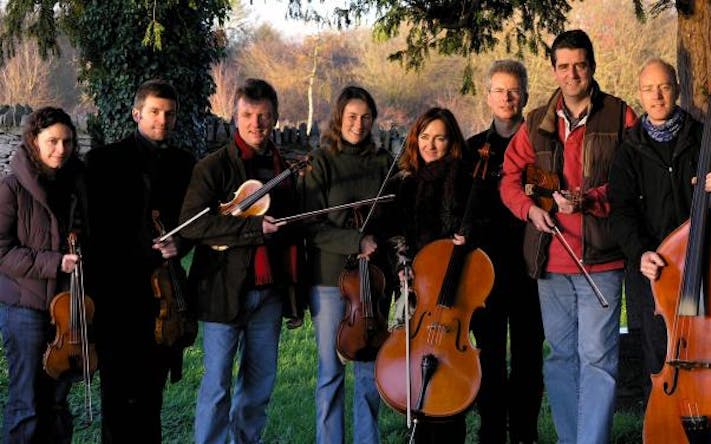A hot, sultry Sunday morning at the Holywell Music Room, with the Fremontodendron peeping in high at the east windows wearing a bit of a jaded look. On offer was Mozart and Dvorak, the players being what could almost be called the Coffee Concerts House Band - Messrs Windass, Lepage and Jane Fenton of the Adderbury Ensemble, plus their close associate Viv Mclean on piano.
The Piano Quartet in G minor (K478), written when Mozart was 29, is usually regarded as the first major piece composed for piano quartet in the chamber music repertoire. A nice story originating from Constanze Mozart's second husband relates that Mozart received a commission for three quartets in 1785 from his publisher. The latter was, however so dismayed that the amateur musicians of the day would find the score of the first one too difficult to play that he coughed up the agreed fee for the three pieces on the strict condition that the second and third of them should not see the light of day. Is there not a moral there for other artists and composers? Obscurity of output can lead to the trebling of your fee!
The sparkling clarity of Mr Mclean's playing was a constant delight, his phrasing and articulation a model of sensitivity. In the solo sections with the right hand in the opening 'Allegro', one could almost think he was playing on a fortepiano, with a rinky-tink-tink to the sound, yet the rapidly repeated notes had weight as well as jauntiness. The 'Larghetto' has to my ear affinities with the slow movement of both Piano Concertos 8 and 12, and featured a delicately swaying duet between piano and Mr Lepage's violin.
Dvorak's Piano Quartet No. 2 is a beast of a very different order - much more sinewy and even strenuous. Dvorak is not considered a natural writer for the piano - his Piano Concerto is not a staple of the repertoire - but the dark drama of the initial statement from the united strings is interestingly offset by Mr Mclean's less formal but precise accompaniment at the opening. Towards the end of the 'Allegro con fuoco' there was a fine, whirring conversation between violin and viola, and throughout the piece it was pleasant to see the viola taking a prominent part. Later, in the 'Lento', there were little dancing figures to entrance the ear, followed by real passion in its central section.
At holiday times the inrush of visitors to Oxford tends to lower somewhat the average age of these Coffee Concert audiences, and it was heartening to note several children present, including budding musician Daisy Soni from near Bicester. We read that great oaks from little acorns shall grow - perhaps one day to come Daisy herself will be on the dais at Holywell St, delighting an audience.




